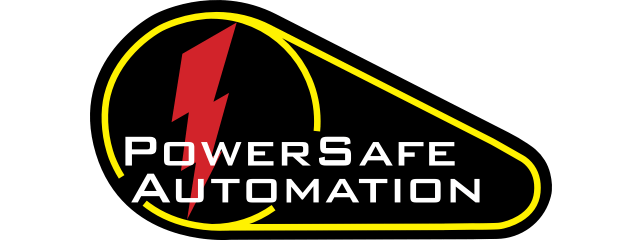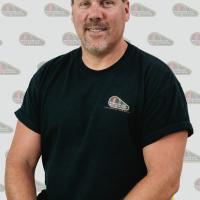When it comes to machine safety, getting it right isn’t just a matter of compliance—it’s a matter of protecting lives, reducing downtime, and keeping operations running smoothly. But let’s face it: managing a machine guarding project can be time-consuming and complex, especially if you try to handle it all in-house.
As a Safety Manager, you’re juggling compliance requirements, production deadlines, and the overarching goal of protecting workers. Fortunately, there’s a smarter way to approach machine guarding that can help you save significant time, avoid costly mistakes, and ensure long-term compliance: turnkey machine guarding solutions.
In this article, we’ll explore how Safety Managers can benefit from turnkey solutions, why partnering with a safety provider beats DIY or piecemeal approaches, and the strategies you can use to streamline your next project from risk assessment to installation.
1. Start with a Comprehensive Risk Assessment
Before any guarding decisions are made, it’s essential to conduct a thorough risk assessment. This step ensures you're focusing on real hazards and applying the appropriate level of protection—without over- or under-guarding.
Best Practices:
-
Use standards like ANSI B11.0 and ISO 12100.
-
Prioritize machines based on exposure risks, operational complexity, and historical incidents.
-
Document everything digitally to streamline audits and communication.
2. Involve Engineering and Maintenance Early On
Time delays often result from miscommunication or last-minute surprises during installation. Involving your engineering and maintenance teams early ensures that the guards won’t interfere with machine performance, maintenance routines, or operator workflow.
Tip:
Form a cross-functional safety team to review designs and approve changes before installation begins. This reduces costly back-and-forth and improves project buy-in.
3. Embrace Modular Guarding Systems
Modular systems are one of the biggest time-savers in modern machine guarding. These pre-engineered solutions are quick to install, easy to reconfigure, and often come with OSHA/ANSI compliance baked in.
Benefits:
-
Faster lead times
-
Future-proof design for upgrades or expansions
-
Simplified part replacement
4. Standardize Your Guarding Across the Facility
A standardized approach reduces the need for custom fabrication on every machine and accelerates both procurement and installation. By using consistent parts—such as panels, posts, brackets, and fasteners—you can also streamline training and maintenance.
Action Step:
Create a “Guarding Playbook” with approved components, standard installation practices, and inspection templates.
5. Digitize All Guarding Documentation
Paper-based systems are slow, error-prone, and difficult to scale. By digitizing your assessments, maintenance logs, inspection checklists, and documentation, you empower teams with faster access to vital safety information.
Recommendation:
Use a safety or EHS management system that integrates with digital checklists and reporting tools.
6. Choose a Turnkey Guarding Provider Over a Product Supplier
It’s tempting to go the DIY route or buy off-the-shelf guards from a catalog. But that decision often results in delays, incorrect installations, and missed compliance targets. A turnkey machine guarding partner manages the entire project—risk assessment, custom design, fabrication, and installation.
Key Differences:
| Product Supplier | Turnkey Provider |
|---|---|
| Sells pre-made guards | Conducts risk assessments |
| No design support | Custom engineering |
| You install it yourself | Professional installation |
| Limited compliance guidance | Full OSHA/ANSI alignment |
7. Professional Installation = Time and Cost Savings
DIY installation is more complicated than it seems. Many teams underestimate how long it takes or run into compatibility issues mid-installation. This often results in guards being left on shelves, unused and ineffective.
Benefits of Professional Install:
-
Dedicated team focused solely on safety
-
Faster install with fewer disruptions
-
Ensured compliance from the start
8. Train Your Workforce to Maximize Adoption
Even the best-guarded machines are unsafe if workers don’t understand how to use them properly. A true safety partner will offer training sessions tailored to your machinery, teams, and procedures.
Training Inclusions:
-
LOTO integration
-
Access protocols
-
How to report guarding issues
-
Inspection checklists
9. Plan Installations Around Production Schedules
Time is money. Look for providers that can coordinate installations during planned downtime or off-shifts to minimize disruption.
Implementation Tips:
-
Use prefabricated guards to reduce onsite assembly time
-
Create a detailed install schedule with tooling, labor, and access needs
10. Focus on Lifecycle Value—Not Just Upfront Cost
While product-only solutions may appear cheaper, they don’t account for:
-
Installation time
-
Compliance risk
-
Future modifications
-
Worker safety
Turnkey solutions may cost more upfront but provide far greater long-term ROI through efficiency, reduced liability, and fewer workplace incidents.
Why More Safety Managers Are Moving to Turnkey Guarding Solutions
With increasing OSHA inspections and shrinking maintenance resources, Safety Managers are realizing that turnkey machine guarding is the best path to sustainable safety.
Key Advantages:
-
Simplified project management
-
End-to-end compliance assurance
-
Custom-fit designs for your equipment
-
Long-term support and training
-
Scalable across multiple facilities
Choosing the Right Safety Partner
Here’s what to look for when evaluating turnkey guarding providers:
- Proven experience with industrial guarding projects
- Engineering and compliance expertise (ANSI, OSHA, ISO)
- In-house design, fabrication, and installation
- Ability to serve multiple sites nationwide
- Clear documentation, validation, and training support
Ask for case studies or references in your industry. The right partner will have a track record of success and be ready to walk you through the process from start to finish.
Final Thoughts
Machine safety doesn’t have to be a burden. With the right approach—and the right partner—you can protect your people, ensure compliance, and maintain operational efficiency without the headache of managing every detail yourself.
By choosing a turnkey machine guarding solution, you’re not just checking a box for compliance. You’re building a long-term safety culture that values prevention, performance, and people.
Ready to Get Started?
PowerSafe Automation is a nationwide turnkey machine guarding provider offering risk assessments, custom engineering, and professional installation tailored to your facility.
Contact Us Today for a machine guarding assessment or explore our full range of modular guarding systems.



